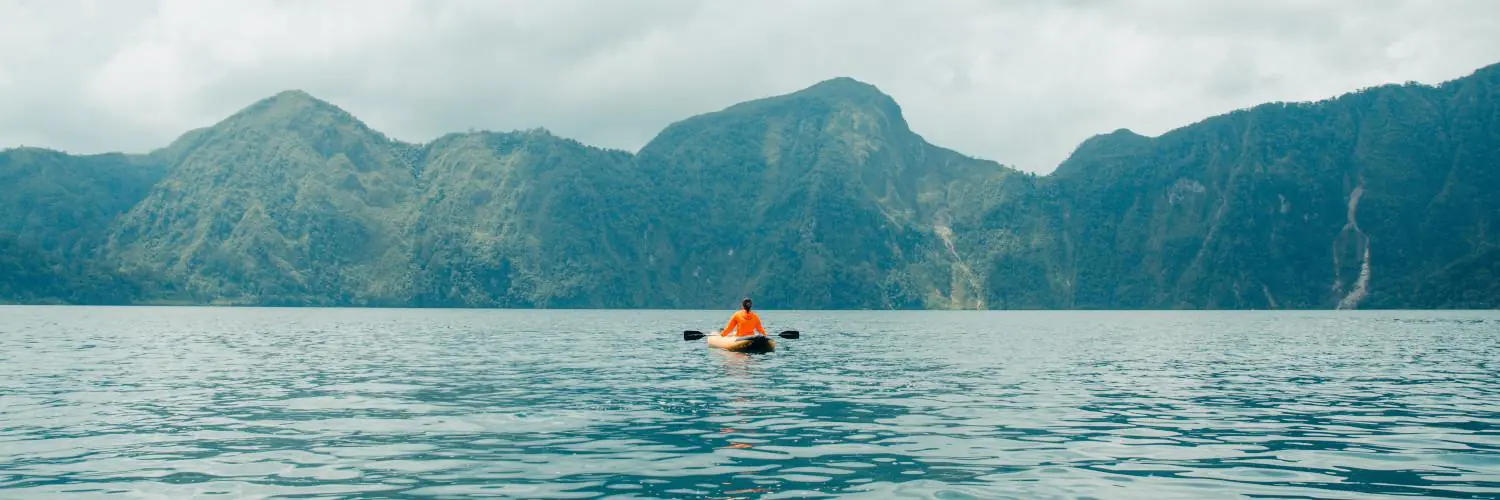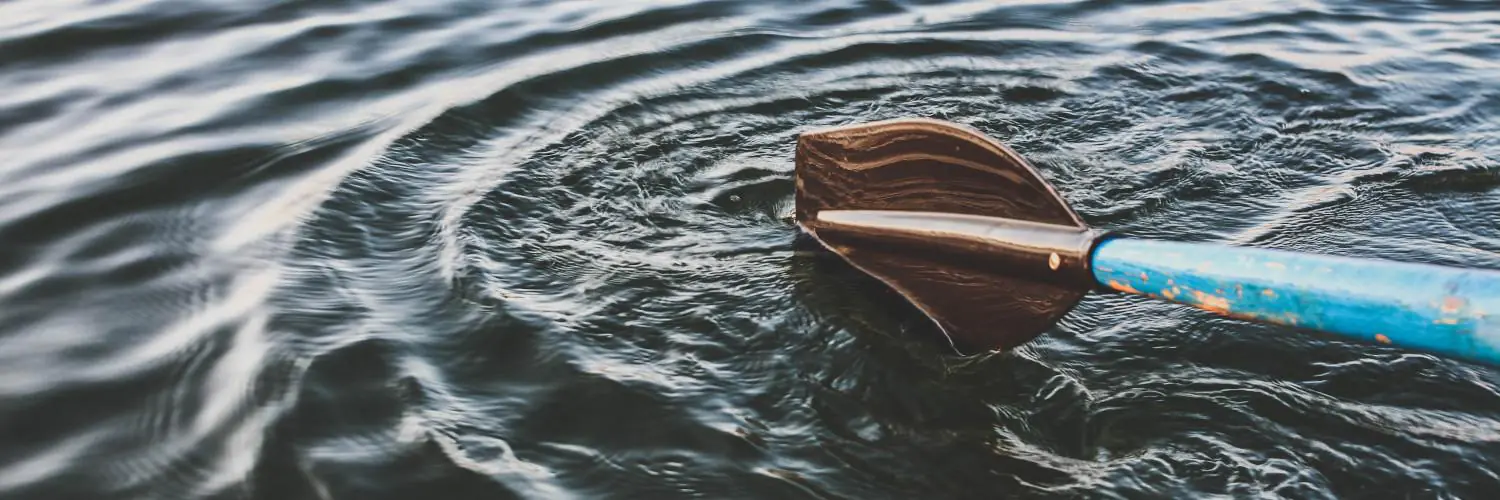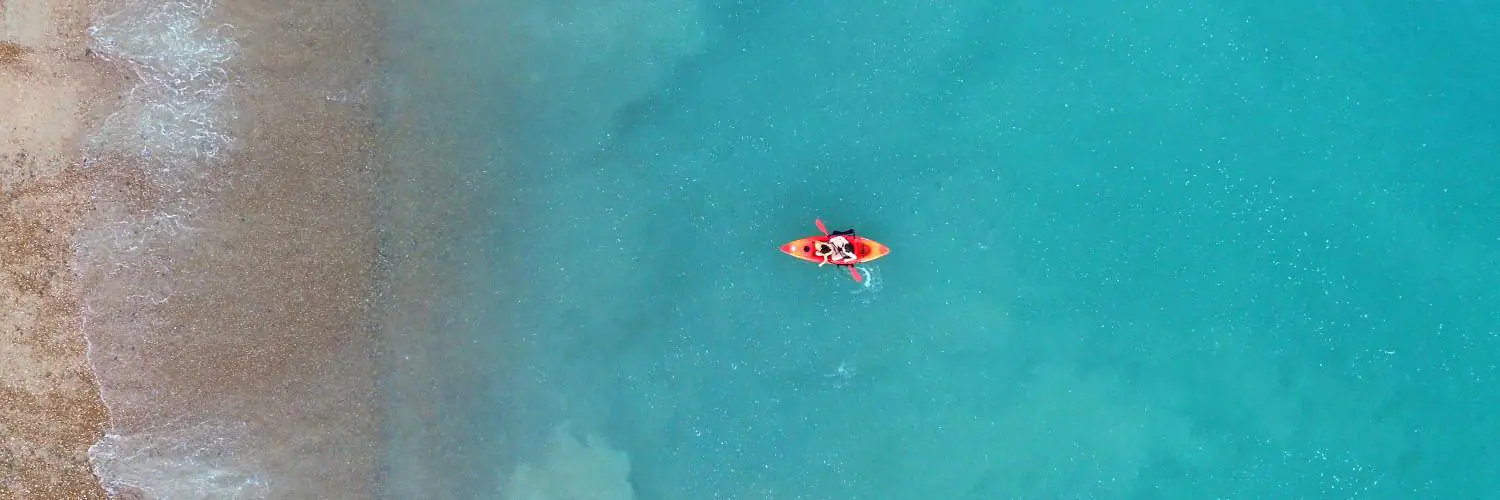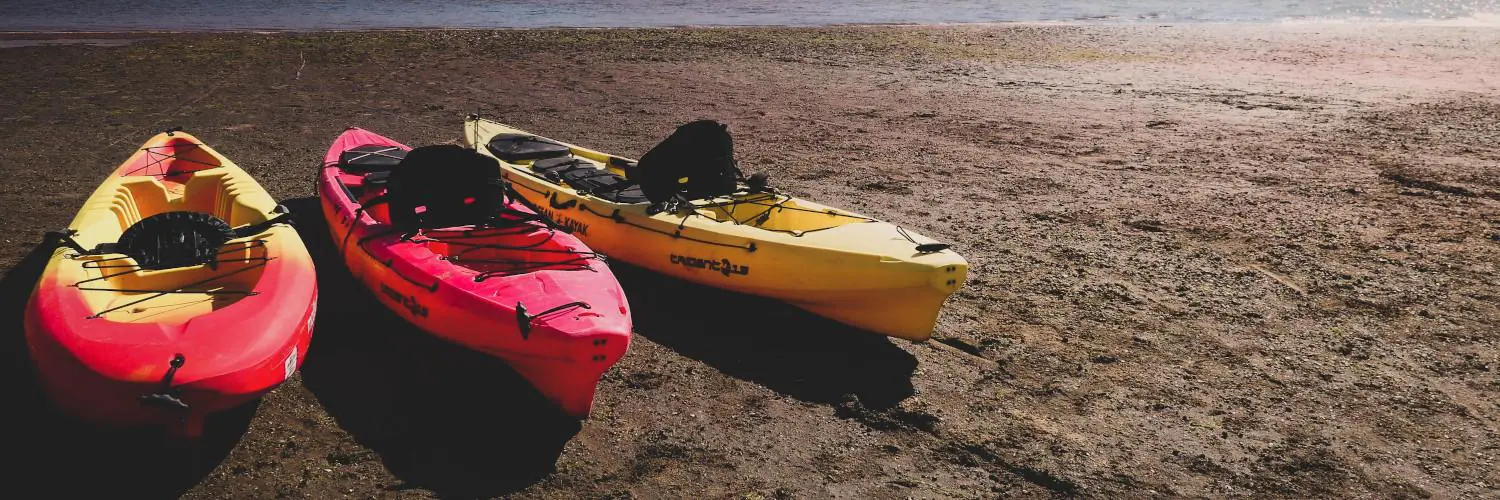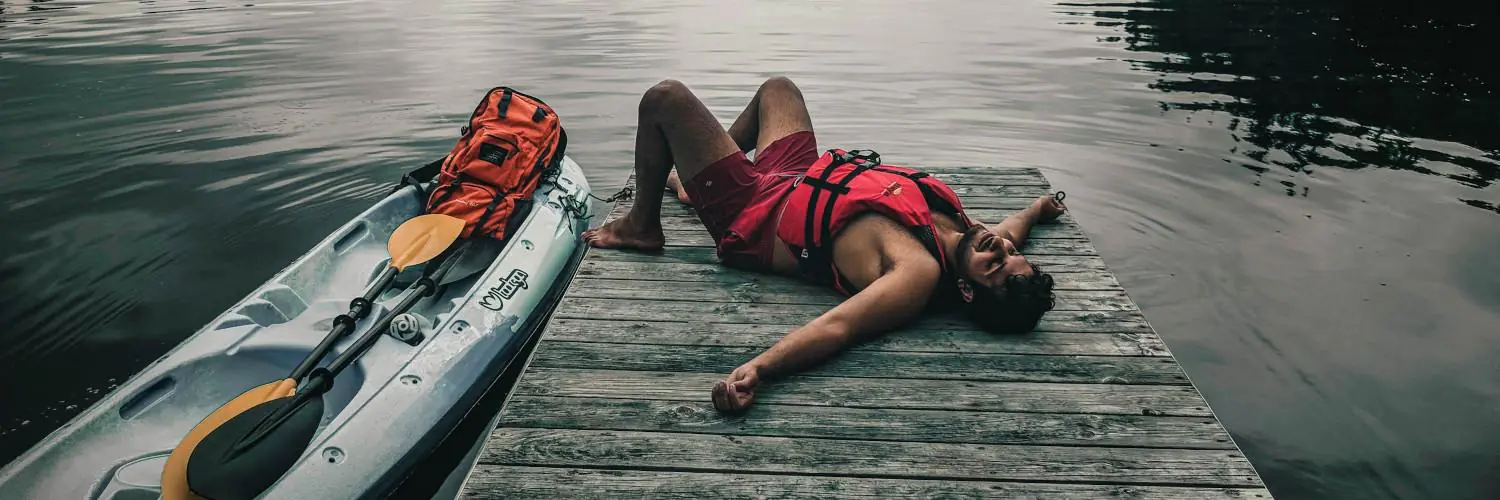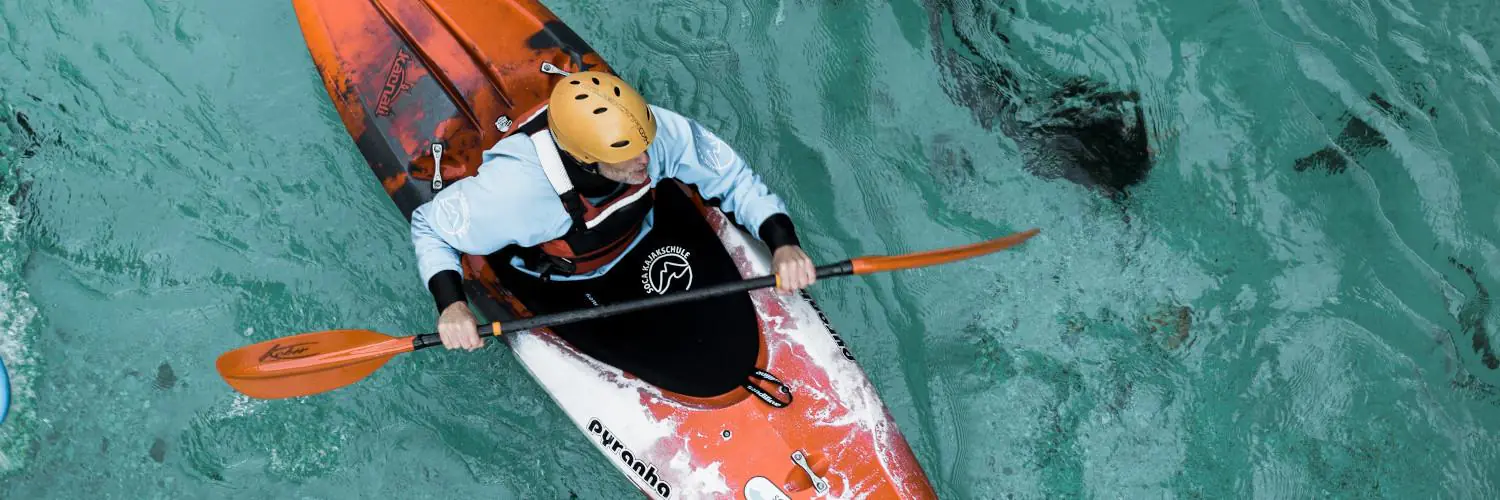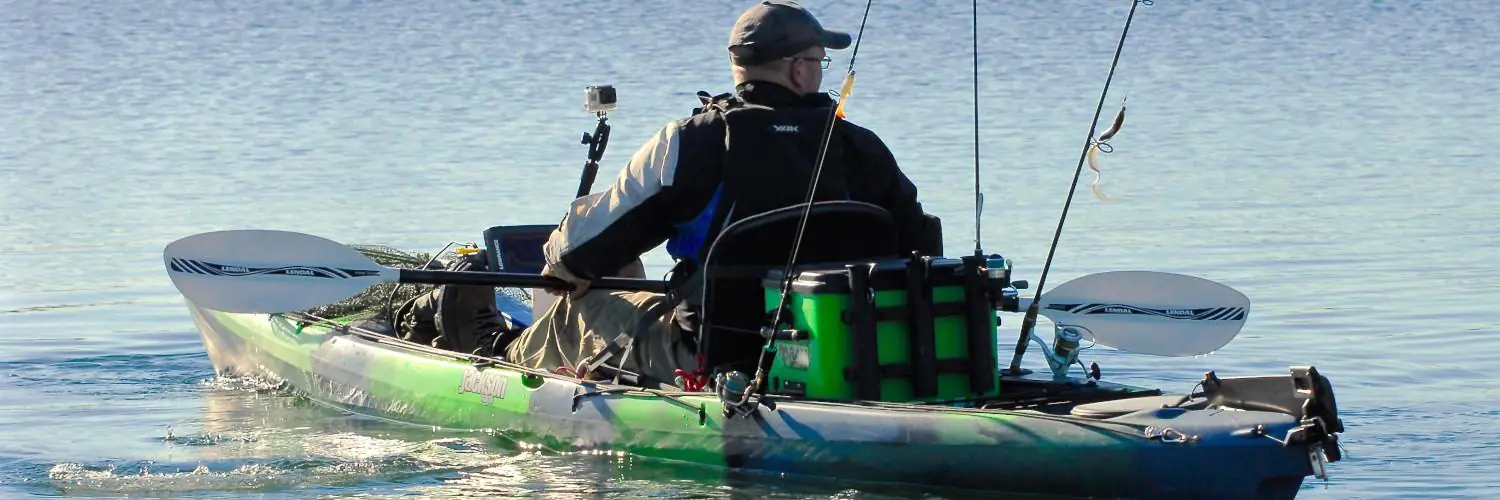Whales and kayaks often cross paths in coastal waters, leading many to wonder about the safety of paddling near these massive marine mammals. Whales rarely attack kayaks, and there are no recorded incidents of orcas intentionally harming kayakers.
While orcas have been in the news for damaging boats in some areas, this behavior has not extended to kayaks. Kayakers who spot whales should stay calm and keep a safe distance. Moving away slowly and quietly is the best approach if whales come near.
Whale watching by kayak can be an amazing experience when done responsibly. Paddlers should learn about whale behavior and follow local guidelines to avoid disturbing these animals in their natural habitat. With proper precautions, kayaking in whale territory can be a safe and unforgettable adventure.
Table of Contents
Ecology and Behavior of Orcas
Orcas are fascinating marine mammals known for their intelligence and complex social structures. These apex predators play a crucial role in ocean ecosystems.
Orcas: Apex Predators of the Sea
Orcas, also called killer whales, are the ocean’s top predators. They belong to the dolphin family and are the largest members of this group.
Orcas can grow up to 32 feet long and weigh up to 11 tons. Their size and strength make them feared hunters in the sea.
These animals have a distinctive black and white coloring. This helps them blend in with the water and sneak up on prey.
Orcas use their powerful tails to swim at speeds up to 35 miles per hour. This lets them chase down fast-moving prey like seals and other whales.
The Social Structure of Orca Whales
Orcas live in tight-knit family groups called pods. These pods can have up to 40 members and stay together for life.
Each pod has its own unique dialect of clicks, whistles, and pulsed calls. This “language” helps them communicate and work as a team.
Orcas have strong family bonds. Mothers and children stay together even when the young are grown up.
Different orca populations have their own hunting techniques and food preferences. These are passed down from older to younger whales.
Some orca groups specialize in hunting fish, while others go after marine mammals. This shows how adaptable and smart these animals are.
Dietary Habits and Prey
Orcas are opportunistic eaters with a varied diet. What they eat depends on where they live and what’s available.
Fish-eating orcas often target salmon, especially Chinook salmon. These orcas use echolocation to find fish hidden in the depths.
Mammal-eating orcas hunt seals, sea lions, and even other whales. They work together to catch these large prey animals.
Some orcas specialize in eating sharks. They’ve learned to flip sharks upside down, which puts them in a trance-like state.
Orcas are creative hunters. They’ve been seen creating waves to wash seals off ice floes and into the water.
Kayaking in Orca Inhabited Waters
Kayaking in waters where orcas live offers a unique chance to see these amazing animals up close. Some key spots to see orcas while kayaking are the San Juan Islands and Johnstone Strait. Tours and rules help keep both people and whales safe.
Introducing Kayak Tours
Kayak tours give people a safe way to see orcas in the wild. Many tour companies run trips in places like the San Juan Islands and Puget Sound. Trained guides lead small groups of kayakers to areas where orcas are often seen. Tours usually last a few hours to a full day. Guides teach kayakers about orca habits and the local ecosystem. They also make sure everyone follows rules to protect the whales. Most tours provide all the needed gear like kayaks, paddles, and life jackets. No kayaking experience is needed for many tours.
Whale-Watching Guidelines and Regulations
Rules help protect orcas and keep kayakers safe. Kayakers must stay at least 200 yards away from orcas. It’s against the law to chase, feed, or touch the whales. Kayakers should paddle calmly and avoid sudden moves near orcas. Making loud noises is not allowed. If orcas swim close, kayakers should stop paddling and wait for them to pass. Following these rules keeps both people and whales from harm. Breaking the rules can lead to big fines. Tour guides know these rules well and help kayakers follow them.
Johnstone Strait and San Juan Islands
Johnstone Strait and the San Juan Islands are top spots for kayaking with orcas. Johnstone Strait is in British Columbia. It has a big group of orcas that live there year-round. The best time to see them is from July to September. The San Juan Islands are in Washington State. Orcas often come there to hunt for salmon. The waters around the islands are calm, making them good for kayaking. Both areas have many kayak tour options. Some tours are just for a day, while others last several days with camping. The scenery in both spots is beautiful, with mountains and forests along the shore.
Understanding Whale Encounters
Whale encounters while kayaking can be thrilling yet unpredictable. Knowing how whales behave and how to interact safely is key for both humans and marine life.
Typical Behaviors of Orcas around Kayaks
Orcas, or killer whales, are often curious about kayaks. They may swim close to inspect these unfamiliar objects in their habitat. Some orcas might circle kayaks or spy-hop, poking their heads out of the water to get a better look.
These behaviors are usually not aggressive. Orcas are smart and may see kayaks as interesting items to check out. They might even follow kayaks for short distances.
In rare cases, orcas have been known to nudge or bump kayaks gently. This is likely a form of play or investigation rather than an attack.
Uncommon Whale Interactions
While attacks on kayaks are very rare, they can happen. Some orcas have rammed boats in certain areas, though this behavior is not common worldwide.
Reasons for these actions are not fully understood. Some experts think it could be linked to past bad experiences with boats or changes in their environment.
Humpback whales have been known to accidentally surface under kayaks. This is usually not on purpose but can be dangerous for kayakers.
If a whale gets too close, stay calm and avoid sudden movements. Try to paddle away slowly and steadily.
Respecting Marine Life While Kayaking
Keep a safe distance from whales. Most guidelines suggest staying at least 100 yards away. This protects both you and the whales.
Never chase or follow whales in your kayak. Let them approach you if they choose to.
Be quiet and avoid splashing. Loud noises can stress whales and change their normal behaviors.
Learn to spot signs that a whale might be stressed. These include rapid changes in direction or speed.
If you see a whale in distress, call local authorities. Don’t try to help on your own, as this can be dangerous for both you and the whale.
Safety Tips for Kayakers
Kayaking near whales can be exciting, but it requires caution. Following key safety tips helps protect both kayakers and marine life.
Ensuring Personal Safety
Always wear a life jacket when kayaking. Check weather conditions before heading out. Bring safety gear like a whistle, flashlight, and first aid kit. Let someone know your plans and expected return time.
Stay alert and watch for changes in water conditions. Avoid paddling alone if possible. Keep your kayak clean and well-maintained. Practice self-rescue techniques in case you capsize.
Learn basic navigation skills. Carry a map and compass or GPS device. Don’t paddle beyond your skill level or in areas you’re not familiar with.
Safety Around Marine Mammals
Keep a safe distance from whales and other marine life. Stay at least 100 yards away from large whales. Don’t chase, feed, or touch marine animals.
Move slowly and quietly to avoid startling whales. If a whale approaches, stop paddling and let it pass. Never get between a mother whale and her calf.
Watch for signs of distress in whales, like tail slapping. Leave the area if you notice these behaviors. Follow local guidelines and laws about wildlife viewing.
Be aware that whale behavior can be unpredictable. Even gentle giants can cause harm by accident. Respect their space and observe from afar.
Conservation and Ethical Considerations
Kayaking near whales raises important issues about marine conservation and ethics. These topics affect both kayakers and whale populations.
Marine Conservation and Kayaking
Kayaking can impact marine ecosystems. Noise from paddles and boats may disturb whales. Kayaks can also collide with whales, causing injuries. Some areas limit kayaking to protect whale habitats.
Responsible kayaking practices help conservation efforts. Kayakers should keep a safe distance from whales. Many places have rules about how close boats can get. Kayak guides teach visitors about local marine life and conservation.
Whale watching by kayak can support conservation when done right. It raises awareness about whales and their habitats. This can lead to more support for marine protected areas.
Orcas in Captivity versus Wild Orcas
Orcas in the wild differ greatly from those in captivity. Wild orcas swim vast distances daily. They live in family groups called pods. Captive orcas have much less space and often live alone.
Studies show captive orcas may suffer health problems. These include collapsed dorsal fins and shorter lifespans. Wild orcas can live up to 80 years. Captive males often only live 20-30 years.
Kayaking offers a chance to see wild orcas behaving naturally. This can be more rewarding than watching shows with captive orcas. It also avoids the ethical issues linked to keeping orcas in small tanks.
International Kayaking and Endangered Species
Kayaking in different countries brings unique challenges. Some areas have endangered whale species. The Iberian Peninsula and Strait of Gibraltar have at-risk orca populations.
Antarctic kayaking needs special care. The area has many whale species, some endangered. Rules protect these whales from too much human contact.
Transient orcas, found in many oceans, need space. Kayakers must be extra careful around these wide-ranging orcas. Following local laws helps protect all marine mammals, including endangered species.
Kayakers can help by reporting whale sightings to researchers. This aids in tracking whale populations and movements.

